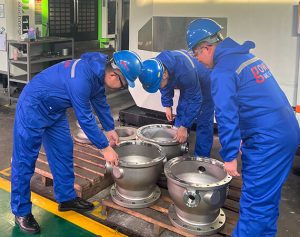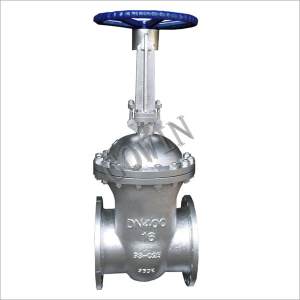A pneumatic control valve is essential to control the flow of gases or fluids in many kinds of industries through using compressed air. As a result, they can effectively control the air or gas to the other components of a pneumatic system.
Having a comprehensive understanding of the pneumatic control valve’s internal mechanisms may provide significant insight on its process control and much more.
Keep reading if you want to increase your expertise about these valves, from how they work to their maintenance.
How Does the Valve Work?
A pneumatic control valve uses compressed air; it manages its pressure and flow rate to allow other devices in the pneumatic system to work efficiently. First, it’s crucial to discuss some of its key components that contribute to its work principle.
Actuator
It includes a flexible material defined as the diaphragm. This component is the one that receives the positioner’s command to open or close the valve via the stem using the compressed air.
Valve Body
This is composed of the pneumatic control valve’s other components, such as the plug or disc, seat, and actuator. It’s the one that determines the flow path in this valve.
Pneumatic Valve Positioner
This component also acts as the air supply and accurately positions the control valve stem to open or close the valve. It adjusts the air pressure supplied to the actuator to determine how much the valve opens or closes in response to the controller’s signal.
Pneumatic Valve Controller
An important component for pneumatic control valves because it measures different factors like pressure and temperature. As a result, it can give commands or signals to the positioner to adjust the air pressure and maintain safe operation.
What is Pneumatic Control Valve’s Working Principle?
A pneumatic signal from the controller will be sent when the valve needs to be closed or opened. The positioner will convert the signal into air pressure according to its commands before sending it to the actuator.
Eventually the actuator’s diaphragm and stem move when the positioner adjusts the air supplied to it. As a result, depending on the stem’s position that affects the sealing component, this will either block the flow path to prevent the air passing through the valve or allow it.
If you want to learn more about the pneumatic control valve’s working principle, this detailed video might help you.
Types of Pneumatic Control Valve
Pneumatic Flow Control Valve
This pneumatic control valve is suitable for managing the speed of air entering or exiting the actuator. This type can be in various designs, such as butterfly valves and ball valves, which can also be combined with other mechanisms, such as rack-and-pinion systems.
Pneumatic Manual Control Valve
As the name implies, operators are responsible for operating this type of pneumatic control valve. So, this pneumatic control valve can be equipped with levers or buttons to effectively manage the compressed air.
Pneumatic Directional Control Valve
It had multiple ports it connected to, which allowed the users to control the air’s path and deliver it between different components. Its designs can have from 2 to 5 openings.
Control Valve With a Pneumatic Actuator: Best Maintenance and Troubleshooting Practices
Regularly inspect the pneumatic control valve for various damage like leaks, wear, and corrosion in any of its components. Furthermore, consider frequently tightening all the nuts and bolts to prevent leaks, or replace them immediately if necessary.
When the valve fails to close or open properly, inspect it for debris or rust and clean and lubricate all internal components to ensure a smooth operation. Moreover, if the valve fails to respond quickly to the control signal, inspect the air supply route for debris that is obstructing its function.
If you have any more questions, feel free to contact Gowin, as well as even consider partnering with them for your future reliable pneumatic control valves.








